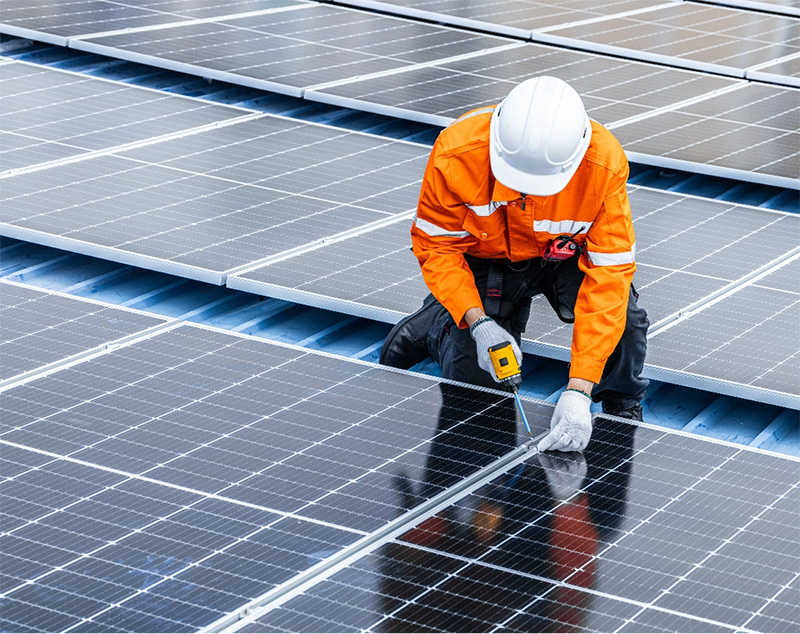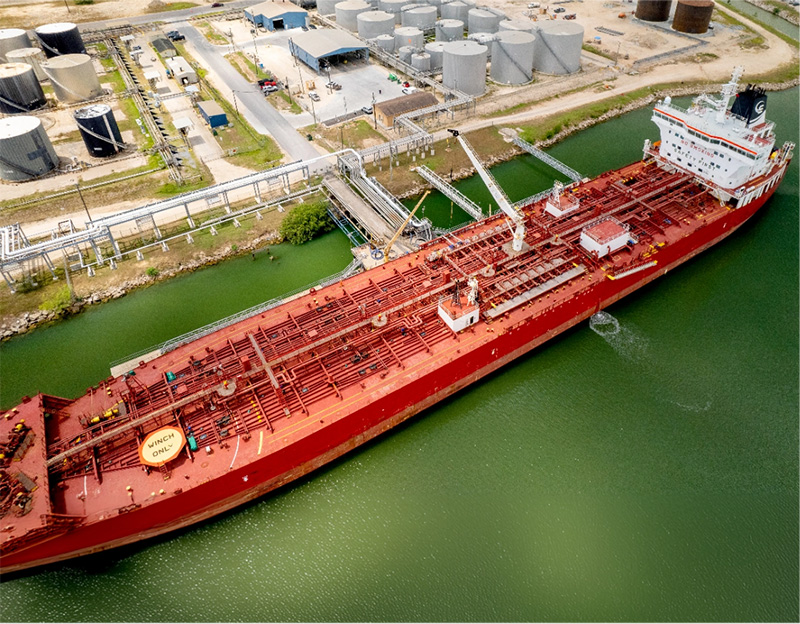About ENRG
ENRG aims to create environmental impact. Investments support the energy transition, combating climate change and air pollution without compromising on returns
Quick Links

The Company’s investment objective is to generate stable returns, principally in the form of income distributions, by originating, structuring and facilitating the deployment of the Company’s capital into a diversified portfolio of global sustainable energy infrastructure, predominantly in countries that are members of the EU, OECD, OECD Key Partner countries or OECD Accession countries. The Company’s investments in sustainable energy infrastructure seek to make an impact by supporting the attainment and pursuit of key SDGs where energy and energy infrastructure investments are a direct contributor to the acceleration of the energy transition.
ENRG aims to achieve diversification by making a range of sustainable energy infrastructure investments across (1) a number of distinct geographies and (2) a mix of proven technologies, that align with the UN SDGs, where the investments are a direct contributor to the acceleration of the energy transition towards a net zero carbon world. No investment is made in projects involving the extraction of fossil fuels or minerals.
Explore our portfolio

ENRG unique investment strategy aims to address structural demand gaps in target markets, with measurable ESG impacts. To address those gaps and support the energy transition on a global scale, core renewables are not sufficient. ENRG’s investments go beyond renewables and target sustainable energy technologies, providing countries that simply cannot move to renewables in the short-term with the appropriate technology.
How to investThe Company targets a total unlevered NAV return of 10%, net of fees, and a progressive annual dividend per share, paid quarterly.
Visit investor centre
A vehicle presenting a distinctive combination of access, return and impact.
Access to global private markets energy investments
A geographically and technologically diversified portfolio of actively managed high-impact investments
Targeting attractive risk-adjusted returns from around the world whilst ensuring an effective and just climate transition
A highly diversified mix of assets driving both long-term capital growth and income
High degree of inflation linkage with over 90% of revenues that are inflation-linked
Creating environmental impact by support the energy transition, combating climate change and air pollution without compromising on returns.
Transparent impact reporting
SFDR Article 9
SDR Sustainability Impact label
The Company aims to achieve diversification principally by making a range of Sustainable Energy Infrastructure Investments across a number of distinct geographies and a mix of proven technologies that facilitate the achievement of the SDGs by way of Sustainable Energy Infrastructure Investments.
The Company can invest (calculated at the time of investment) up to:
No investments are made in extraction projects for fossil fuel or minerals. Non-compliance resulting from changes in the price or value of Sustainable Energy Infrastructure Investments following investment will not be considered as a breach of the investment restrictions.
The Company holds its investments through one or more SPEs and the investment restrictions are applied on a look-through basis.
In the event of any breach of the investment restrictions applicable to the Company, shareholders will be informed of the remedial actions to be taken by the Company through an RIS announcement.
Whilst it is the intention of the Company to be fully or near fully invested in normal market conditions, uninvested cash or surplus capital or assets may be invested on a temporary basis in:
provided that not more than 20% of the Gross Asset Value, calculated at the time of investment, may be so invested, following the deployment of the Company's net issue proceeds.
The Company may make use of long-term limited recourse debt for Sustainable Energy Infrastructure Investments to provide leverage for those specific Sustainable Energy Infrastructure Investments. Such long-term limited recourse debt will not, in aggregate (calculated at the time of entering into or acquiring any new long-term limited recourse debt), exceed 60% of the prevailing Gross Asset Value.
In addition, the Company may make use of short-term debt, such as a revolving credit facility, to assist with the acquisition of suitable opportunities as and when they become available. Such short-term debt will be subject to a separate gearing limit so as not to exceed 30% of the Gross Asset Value at the time of entering into (or acquiring) any such short-term debt.
In circumstances where these aforementioned limits are exceeded as a result of gearing of one or more Sustainable Energy Infrastructure Investments in which the Company has a non-controlling interest, the borrowing restrictions will not be deemed to be breached. However, in such circumstances, the matter will be brought to the attention of the Board who will determine the appropriate course of action.
The Company may enter into hedging transactions for the purposes of efficient portfolio management, which may include (as relevant) short-term currency hedging (as described in the last published prospectus of the Company), interest rate hedging and power price hedging. The Company does not intend to use hedging or derivatives for investment purposes but may from time to time use risk management instruments such as forward contracts and swaps (collectively ‘‘Derivatives’’) to protect the Company from any fluctuations in the relative value of currencies against Pound Sterling, as well as to hedge against interest rates and power prices. The Derivatives must be traded by private agreements entered into with financial institutions or reputable entities specialising in this type of transaction and will be limited to maturities no longer than 12 months. The Company will target investments that provide sufficient asset-level returns to compensate for longer term fluctuations in exchange rates. Furthermore, asset level returns where possible will be linked to local inflation rates.
Derivatives may be employed either at the level of the Company, at the level of the relevant SPE or at the level of any intermediate wholly owned subsidiary of the Company.
All hedging policies of the Company will be reviewed by the Board and the AIFM on a regular basis to ensure that the risks associated with the Company’s investments are being appropriately managed. Any derivative transactions carried out will only be for the purpose of efficient portfolio management and will not be carried out for speculative purposes.